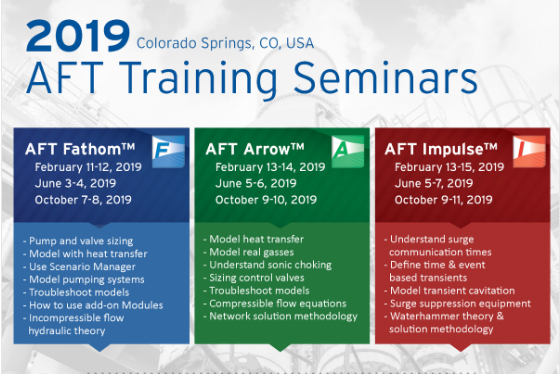Contributor: Applied Flow Technology
If you or your kids are gamers, chances are you have a serious preference on the console you think is best. Right now it’s a fierce rivalry between PlayStation and Xbox with Switch coming in a strong third (or for some it’s first). Either way, they perform differently, have different games, different graphics, and different price tags.
Just like you wouldn’t make an impulsive console purchase, you wouldn’t make a hasty hydraulic flow software purchase. After all, it is a big investment and a tool you will most likely use for a very long time. And just like consoles, there are a few top runner hydraulic flow analysis software companies.
You might think they sound similar and can do the same thing, right? Wrong! Each offers different features and each has it’s own level of usability. Many companies have an impressive list of features, but they may not work as expected. That’s why it’s important to take the time to test drive the software.
So how do you decide which hydraulic flow analysis tool is the right tool for you?
How to Evaluate Before Purchasing
First Step: Request a Live Demo
Most hydraulic flow companies have a small demo on their website like AFT does. However, it is important to know that this limited demo will absolutely NOT show you what you are looking for. I can’t speak for all companies, but AFT software has so many features and capabilities that is it 100% impossible to throw a demo at an engineer and expect them to automatically understand how to use it.
Therefore, it’s highly recommended that your first step be a live demo where the company can show you the features. This time also gives you the opportunity to dive in and really ask questions on how the software can meet your project needs.
Second Step: Utilize an Evaluation License
If you take this step, it’s a really big step. This means you are committing to installing a full version of the software and allocating a few hours to testing it out. AFT provides customers sample files they can play with. But take full advantage of this opportunity! Upload your own neutral file, .pcf files, EPANET files or excel data to kickstart models. Test the add-on modules and run your scenarios. Use pump sizing features and compare your data to other software models and even your hand calculations. This is your time to truly evaluate the features and the usability.
Third Step: How to Communicate the Budget
For many companies, the engineer testing the software needs to communicate with others prior to a purchase. This is the step where you will bring all the players into one room and have a final call with your software consultant. You can explain what you like about it, how you can use it, and your consultant will give a broader demonstration to show extended capabilities and will explain the efficiency benefits – both for man-hours and project accuracy.
What to Look For
While you are taking the vital steps to evaluate a software, you should keep your end-goals in mind and really think about the features you will need to complete projects you work on. If there are specific features you need, like GIS importing, be sure to compare your prospective products to see how that specific feature works in both software products and evaluate the results it gives you.
Below are the top 10 features AFT encourages our customers to look at:
- Multiple Levels of Software Calculation Validation
- This can include model comparisons to published examples, an official quality assurance program such as one that adheres to ASME NQA-1 standards for usage in safety related systems in the nuclear industry, and plenty of case studies.
- Scenario Management
- An ability to model any variety of cases within a single model file where you can change any input parameter or fluid properties to determine their effect on results. A “family-tree” like scenario structure is very effective where changes in parent cases should automatically update dependent child cases.
- Global Editing
- Efficiency is important. The ability to massively edit multiple pieces of information at the same time is key.
- Excel Integration
- Importing model changes to multiple scenarios simultaneously makes updating different cases with data variances incredibly effective. Sending specific model output results to a spreadsheet format in an automated fashion leads to significant flexibility when carrying out other calculations.
- Design Alerts for Maintaining Code Compliance
- Quickly bring attention to when important parameters are outside their maximum or minimum allowable boundaries.
- Heat Transfer
- Full piping heat transfer calculations should be included to handle convection, buried pipes, layers of insulation, and the ability to calculate external heat transfer coefficients based upon ambient temperatures and windspeeds. Heat transfer through heat exchangers is necessary as is the ability to perform the proper energy balances to determine the mixture temperature when two different streams mix together.
- Goal Seeking and Transient Modeling
- Goal seeking saves great amounts of time by automatically changing multiple input parameters to provide you the results you want. This also aids with model calibration to measured data.
- Transient modeling is important to consider because systems rarely stay the same over time and it is necessary to determine the overall dynamics of a system and how multiple components interact with each other as things change. Simply running multiple cases as a series of steady-state runs would be cause for missing potentially important or problematic intermediate results.
- Non-Newtonian and Slurry Modeling
- A quality flow analysis software should be able to handle not only a wide variety of fluids other than water but should have the ability to handle other types of behavior such as paper stocks, Power Law fluids, Bingham Plastics, or settling slurries.
- System Cost Analysist
- Accounting for the material, installation, maintenance, and energy costs for an entire piping system in an easy-to-read cost report can be just as important as determining the system flow, pressure, and temperature distributions.
- Waterhammer Analysis
- Waterhammer situations can lead to disastrous effects upon sudden pressure surges. A quality flow analysis software should have the ability to determine the system pressure response due to various causes like pump trips, valve closures, pump starts, and include the ability to use surge suppression equipment as well.
If you would like to look further into any of the above features, contact AFT at info@aft.com or call (719) 686-1000. We look forward to meeting you.





